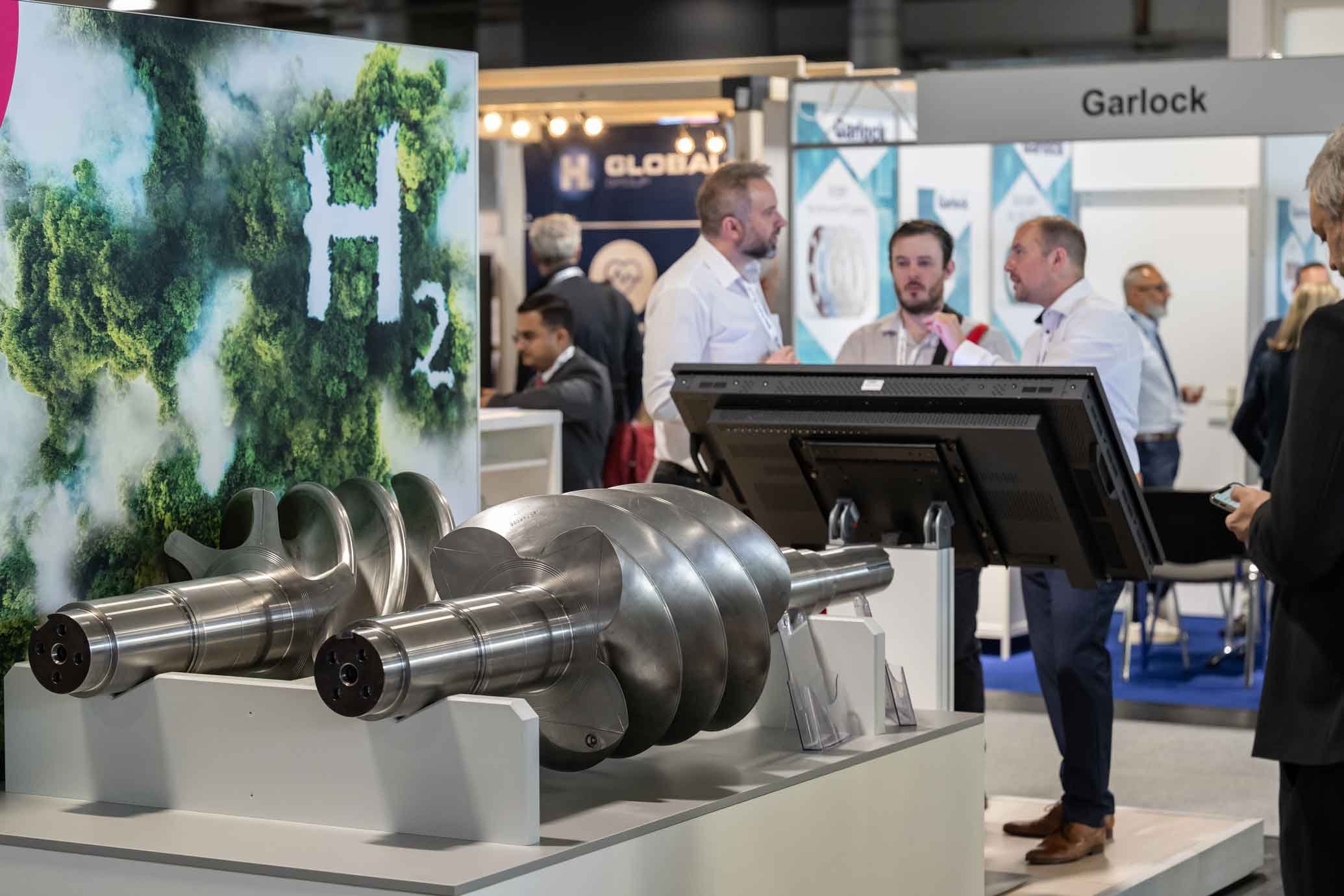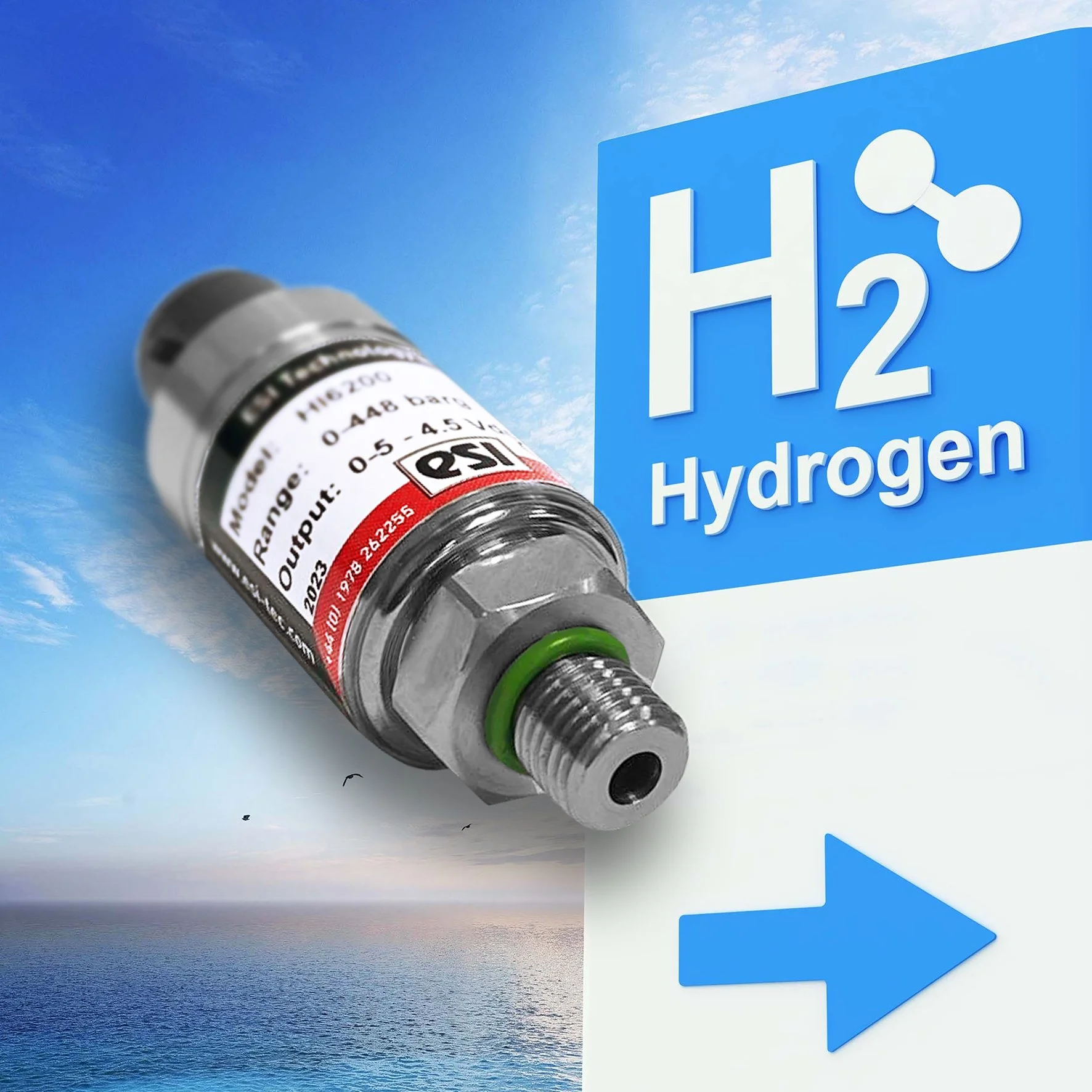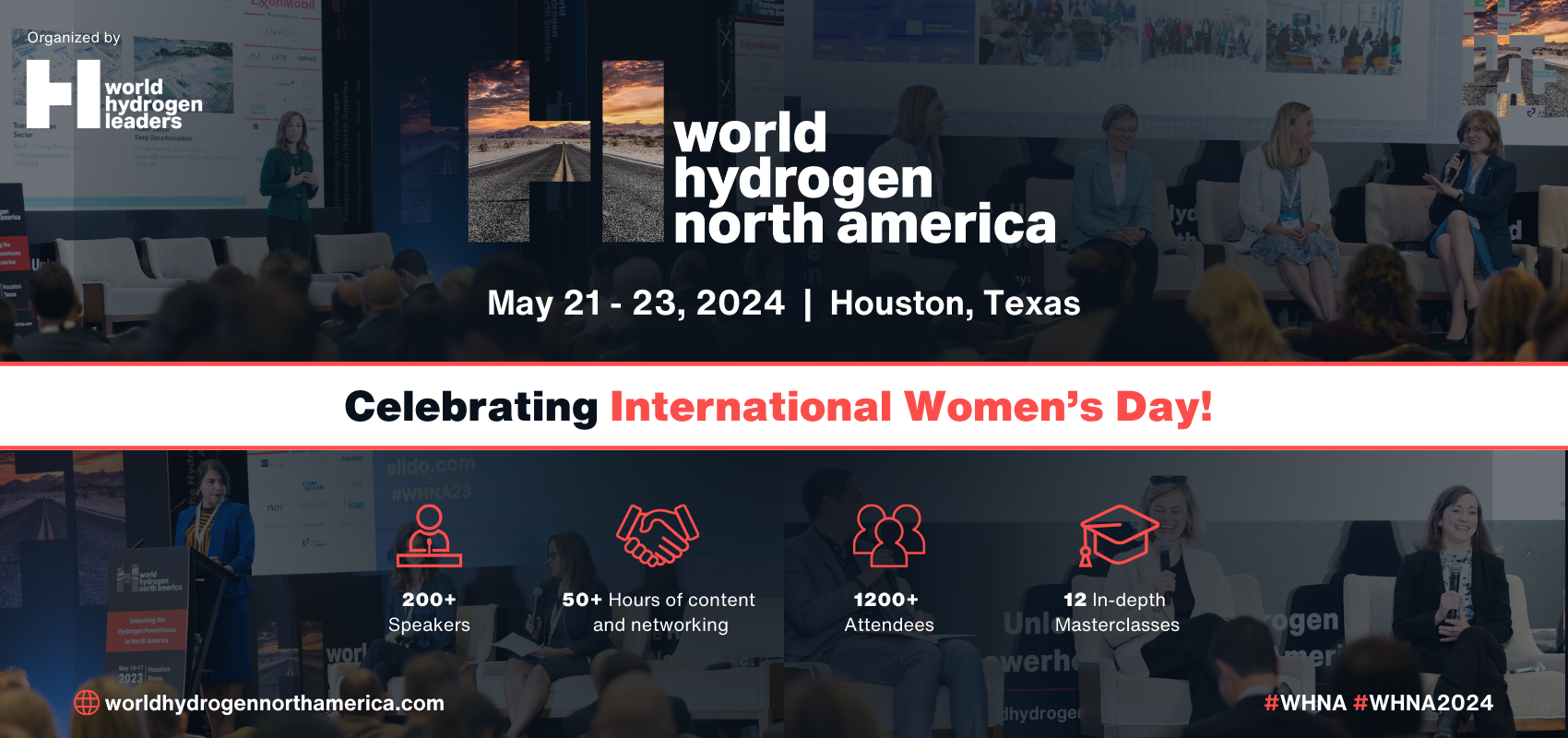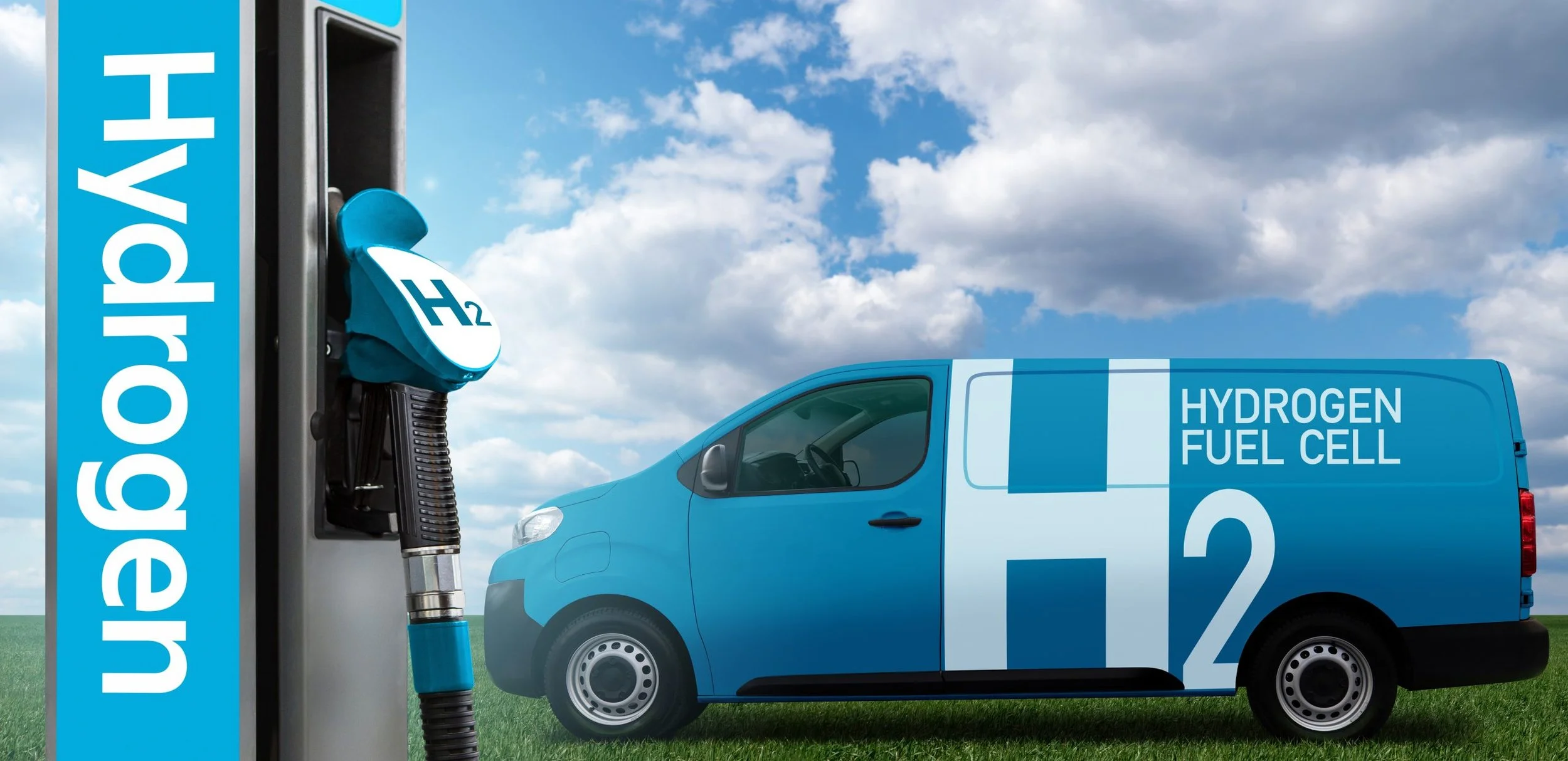The HI6200: Compact Pressure Sensing Built for the Hydrogen Industry
As the hydrogen industry continues to grow, the demand for compact, reliable, and high-performance pressure measurement solutions has never been greater. The HI6200 compact pressure transmitter from ESI Technology is designed specifically to meet these challenges, offering outstanding capability in an incredibly small and robust package.
Engineered with the latest technology, the HI6200 provides accurate and stable pressure measurement for hydrogen applications, where safety, precision, and durability are critical. Despite its compact size, this transmitter delivers exceptional performance, making it the ideal choice for use in space-restricted systems such as hydrogen fuel cells, refuelling stations, and storage solutions.
One of the key advantages of the HI6200 is its suitability for hydrogen environments. Hydrogen presents unique challenges due to its small molecular size and high diffusivity, which can often lead to material degradation or leakage in unsuitable sensors. The HI6200 overcomes these issues through its specialised design and carefully selected materials, ensuring long-term stability, reliability, and resistance to hydrogen embrittlement.
With high accuracy and excellent long-term stability, the HI6200 allows operators to monitor pressure with confidence, supporting both safety and operational efficiency. Its compact form factor makes installation easy, even in tight spaces, without compromising on performance.
Additionally, the HI6200 offers a range of output options and pressure ranges, providing flexibility to suit a variety of hydrogen applications. Whether used in mobile hydrogen-powered vehicles or fixed industrial systems, it ensures consistent and precise monitoring — critical for maintaining system integrity and safety.
In a sector where reliability and safety are paramount, the HI6200 compact pressure transmitter from ESI Technology offers a cutting-edge solution. Designed for the unique demands of hydrogen applications, it proves that when it comes to pressure measurement, size isn’t everything — performance is.
How Pressure Transmitters Help to Drive Green Energy Innovation
The global shift to green energy demands precise instrumentation to optimise processes and ensure safety. Pressure transmitters, vital across various renewable energy sectors, contribute significantly to the efficiency and reliability of these systems. From hydrogen production to wind and solar power, they support sustainable solutions while addressing unique industry challenges.
Supporting Hydrogen and Other Green Energy Systems
Hydrogen is a cornerstone of clean energy, and pressure transmitters are critical in monitoring its production, storage, and transport. For instance, ESI Technology’s hydrogen-compatible transmitters, designed with advanced materials like silicon-on-sapphire, ensure safe pressure monitoring in electrolysers and storage tanks, helping to prevent leaks and optimise efficiency.
in wind turbines, transmitters monitor hydraulic systems controlling blade pitch and braking mechanisms, ensuring consistent performance under harsh conditions. Meanwhile, solar thermal plants rely on robust sensors to manage high-pressure heat transfer fluids, while hydropower systems use differential pressure transmitters to regulate water flow, maximising turbine efficiency.
Advanced Technologies for Tough Conditions
Green energy environments often involve extremes, from high pressures to corrosive elements. Silicon-on-sapphire (SoS) technology, as featured in ESI Technology’s range, provides exceptional durability and accuracy. Its resistance to temperature spikes and wear makes it ideal for hydrogen and geothermal applications, reducing maintenance and downtime.
Shaping a Sustainable Future
As renewable energy systems grow smarter, pressure transmitters are evolving to include wireless connectivity and IoT integration. These innovations allow real-time monitoring and predictive maintenance, enabling operators to act proactively.
Pressure transmitters are more than tools—they’re enablers of the clean energy revolution, helping organisations achieve safer, more efficient, and sustainable operations. By investing in durable, hydrogen-compatible transmitters, green energy providers can drive innovation and create a cleaner, greener future.
Explore ESI Technology’s hydrogen-ready pressure transmitter range at esi-tec.com.
Process filter maker targets green energy sector at Hydrogen Live 2025
A UK process filter manufacturer is ramping up its reach in the global green energy sector with a first-time presence at the Hydrogen Live 2025 industry showcase.
Amazon Filters will highlight the benefits of its liquid and gas filtration solutions for mission-critical electrolysis technology at the forthcoming two-day conference and expo in Liverpool.
A key focus is how the correct choice of filters and housings can directly aid the deployment of green hydrogen in activities such as energy production, transport and fleet management, chemicals manufacture, building design and steel making.
On the Amazon Filters stand will be mechanical engineer and Sales Manager Riaz Esmail, whose team delivers technical proposals and quotes, and Tom Davies, Business Development Executive.
Riaz said: “Green hydrogen has the potential to help industries across the world decarbonise as they move towards renewable solutions for production, transport and storage.
“Thanks to our investment programme in ‘quick and able’ manufacturing capacity, we are ideally positioned to design, make and deliver highly bespoke filter vessels precisely in line with industrial need.
“Tom and I will be on hand to discuss how our solutions support water, potassium hydroxide and gas filtration, all involved in hydrogen production.
“We’ll be demonstrating a range of filter cartridges and corrosion-resistant housings we are confident will interest Hydrogen Live delegates.”
Green hydrogen is increasingly seen as a sustainable method of energy storage that can generate electricity when demand requires, using fuel cells.
In AEL (alkaline electrolysis), filtration of the electrolyte involved - an alkaline mix of water and caustic potash - is critical to maintaining the highest conversion efficiency.
The design of the housings is just as crucial to ensure they can withstand the corrosive nature of the high-performance AEL so as to avoid stress corrosion cracking, minimise maintenance costs and maximise in-service life.
Hydrogen Live is an annual conference, exhibition and networking event dedicated to uniting the hydrogen value chain and accelerating the hydrogen economy.
Organised by Foresight Events, Hydrogen Live takes place at the Titanic Hotel Rum Warehouse, Stanley Dock, Liverpool, on 5 and 6 February 2025.

6 Techniques for Detecting Abnormal Vibration Patterns in Rotating Plant Equipment
Plant engineers proactively do a routine check of equipment to ensure efficient plant operations. One of their highly important tasks is to detect abnormal vibration patterns in rotating equipment.
With the help of vibration analysis tools, they can detect abnormalities in the equipment, like an early warning system. Doing so will prevent issues of downtimes or, worse, total equipment failure.
Moreover, vibration analysis tools utilize various techniques to observe machine behavior so they can identify potential problems. Here’s a closer look at the most effective methods.
1. Time-Domain Analysis
Time-domain analysis examines raw vibration data over time. It’s a straightforward way to detect spikes or irregular patterns that might indicate mechanical issues like loosened bolts or imbalance. By observing changes in amplitude, this technique helps identify abnormal equipment behavior.
Monitor startup and shutdown cycles for unusual vibrations.
Compare real-time data against historical baselines.
Best used for general trends rather than specific problem identification.
2. Frequency-Domain Analysis (FFT)
Fast Fourier Transform (FFT) is a reliable method for detecting vibration issues. It converts time-based vibration data into frequency components. This helps identify specific causes of abnormal vibrations.
Detect misalignment, unbalanced components, or bearing faults by analyzing frequency peaks.
Use vibration signatures to match specific faults.
Ideal for diagnosing problems in rotating equipment with consistent operational patterns.
3. Envelope Detection
Envelope detection is particularly useful for finding early-stage bearing faults. It focuses on high-frequency vibration signals that traditional methods might miss. This technique is excellent for machines with rolling elements.
Identify cracks, pitting, or spalling in bearings.
Pinpoint high-frequency signals caused by impacts or defects.
Useful for equipment where bearing health is a priority.
4. Order Analysis
Order analysis is designed for machines with variable speeds, like pumps and compressors. This method tracks vibration patterns as a function of rotational speed, offering insights into how speed affects equipment performance.
Identify resonance issues and speed-dependent faults.
Analyze harmonic patterns related to operational RPM.
A great choice for equipment with fluctuating workloads.
5. Wavelet Transform
Wavelet transform is a more advanced technique for analyzing transient vibrations. Unlike FFT, it handles non-stationary signals, making it suitable for detecting short-lived or intermittent faults.
Spot sudden impacts or gear teeth defects.
Analyze complex equipment with varying load conditions.
Effective for machines with unpredictable vibration behavior.
6. Phase Analysis
Phase analysis looks at the relationship between vibration signals at different points in the machine. It’s a useful tool for diagnosing issues like looseness or misalignment.
Determine whether components are moving out of sync.
Identify coupling or shaft misalignment.
Typically used alongside other techniques for a comprehensive diagnosis.
The Role of Technology in Vibration Analysis
Modern vibration analysis tools integrate printed circuit boards (PCBs) for processing data in real-time. These boards enable the use of sensors and advanced algorithms to detect and analyze abnormal vibration patterns with precision. Without these components, the accuracy and speed of modern diagnostic tools wouldn’t be possible.
Why Regular Monitoring Matters
Abnormal vibration patterns often indicate issues like imbalance, misalignment, or wear. Addressing these early not only prevents unplanned downtime but also extends the life of critical equipment. Using a mix of these techniques ensures that problems are identified accurately and efficiently, allowing for timely intervention.
By combining advanced techniques with modern technology, businesses can maintain reliable equipment performance and minimize operational disruptions. Regular vibration monitoring, supported by robust tools, is a key component of any effective maintenance strategy.

Empowering Change: World Hydrogen North America Spotlights Female Leaders on International Women's Day
As the world commemorates International Women’s Day, World Hydrogen North America is proud to announce a dynamic lineup of female speakers set to take the stage at the upcoming event in Houston. Scheduled for May 21-23, 2024, this highly anticipated conference will bring together over 1,200 key players from across the hydrogen value chain to align on solutions to current obstacles, forge new partnerships, and ultimately accelerate the energy transition.
Recognizing the invaluable contributions of women in shaping the hydrogen industry, World Hydrogen North America is committed to fostering diversity and inclusivity within the sector. The event serves as a platform to highlight the expertise and achievements of female leaders who continue to drive innovation and progress in the field. Among the distinguished speakers at World Hydrogen North America are women who have made significant strides in advancing hydrogen technologies, policy development, and sustainability initiatives, from across the hydrogen value chain, including:
1. Jane Stricker, Senior Vice President, Energy Transition & Executive Director, Greater Houston Partnership
2. Ivette Vera-Perez, President and CEO, Canadian Hydrogen and Fuel Cell Association
3. Kristine Clark, Director of Clean Energy Technology, CF Industries
4. Katrina Fritz, President & CEO, California Hydrogen Business Council
5. Ana Quelhas, Managing Director Hydrogen, EDP Renewables
6. Brooke Vandygriff, COO, HIF Global
7. Dr. Anita Sengupta, CEO, Hydroplane 8. Colleen Wright, Vice President Corporate Strategy, Constellation
9. Nora Han, Vice President of Hydrogen Products, ABB
10. Carolina Lopez-Rocha, Hydrogen Financing and Risk Mitigation Lead, World Bank
11. Kendall Stephenson, Manger, Policy, Global Energy Institute, U.S. Chamber of Commerce
12. Katy Perry, Business Development for Sustainable Energy Systems, Siemens Energy
13. Elizabeth Krasowski, Project Manager, Ramboll
14. Kimberly Williams, Chief Innovation Officer, Houston METRO
www.worldhydrogennorthamerica.com
15. Wiebke Permin, Head of Markets, Market Development Power-to-X, Topsoe
16. Lauren Skiver, Chief Operating Officer, Transdev North America
17. Claire Behar, Chief Commercial Officer, Hy Stor Energy
18. Janice Lin, Founder & President, Green Hydrogen Coalition
19. Stephanie Celt, Senior Energy Policy Specialist, Washington State Department of Commerce 20. Nichole Saunders, Senior Attorney Energy,
Environmental Defense Fund "The biggest takeaway has been the tremendous opportunity to collaborate across the region and in policy, regulation and of course the role of industry associations in developing the hydrogen space," said Ivette Vera-Perez, President and CEO,
Canadian Hydrogen and Fuel Cell Association, at World Hydrogen North America 2023! In addition to keynote presentations and panel discussions, World Hydrogen North America will provide attendees with networking opportunities, interactive workshops, and exhibits showcasing the latest innovations in hydrogen technology. The event promises to be a valuable platform for collaboration and knowledge exchange among stakeholders committed to advancing the hydrogen economy. Download the brochure to explore the full agenda, view the entire speaker lineup, topics & themes, exhibition floorplan, who you will meet, how to attend and more. World Hydrogen North America is the #1 hydrogen industry event to learn, network, and help shape the future of clean hydrogen in North America and beyond! As the world transitions towards a more sustainable energy future, the role of women in driving innovation and progress cannot be overstated.
World Hydrogen North America is honored to celebrate International Women’s Day by highlighting the achievements and expertise of female leaders in the hydrogen industry. Join hydrogen experts at World Hydrogen North America 2024, May 21-23, Houston Get involved with World Hydrogen North America and get in touch with the team today! Book your pass before Friday April 26th to benefit from early bird rates, saving up to $700 – and don’t forget to bring your team to cover all 6 content streams, by taking advantage of 3 for 2 offers! Book directly here: https://bit.ly/WHNA24PR #WHNA For more information about World Hydrogen North America: Contact: Daniel De Nooijer, Head of Delegate Sales Event Dates: May 21 – 23, 2024 Event Location: Hilton Americas-Houston, 1600 Lamar Street, Houston, TX 77010, USA
Organizers: World Hydrogen Leaders Email:
Daniel.denooijer@worldhydrogenleaders.com
Website: https://www.worldhydrogennorthamerica.com

Hydrogen Technology and it’s Role in Reducing Carbon Emissions
In the pursuit of a more sustainable future, the spotlight on hydrogen technology has intensified. As industries grapple with the pressing need to reduce carbon emissions, hydrogen emerges as a pivotal solution that holds the potential to revolutionise energy systems and drive positive change. This blog delves into how hydrogen tech is poised to play a transformative role in the global mission to curb carbon emissions and pave the way for a cleaner, greener tomorrow.
Unveiling Hydrogen’s Carbon-Emission Mitigation Potential
Hydrogen technology is not just a buzzword; it’s a game-changing enabler of decarbonization across sectors. As discussed in our previous blog, “Decarbonizing Industries: Hydrogen’s Promise for a Greener Tomorrow,” hydrogen’s versatility and clean energy attributes make it an indispensable ally in the race to reduce carbon emissions.
Hydrogen’s pivotal role in energy production lies in its potential to serve as a clean and efficient fuel source. By harnessing hydrogen’s energy through fuel cells, industries can generate electricity without emitting harmful pollutants. This transition from traditional fossil fuels to hydrogen-based energy systems holds the promise of significantly lowering carbon emissions and ushering in a new era of sustainability.
Hydrogen’s Multi-Faceted Impact: From Mobility to Manufacturing
The application of hydrogen technology spans a diverse array of sectors, each with the potential to contribute to the reduction of carbon emissions:1. Transporting Toward Zero Emissions
One of the most profound transformations driven by hydrogen tech is in the transportation sector. Hydrogen-powered vehicles, propelled by fuel cells, emit only water vapor as a byproduct. This emission-free characteristic addresses the environmental challenges posed by conventional combustion engines, reducing not only carbon emissions but also air pollutants. As showcased at the Hydrogen Technology Expo Europe, the transition to hydrogen-powered mobility presents a compelling path toward a future of zero-emission transportation.2. Industrial Decarbonisation through Fuel Switching
Industries known for their carbon-intensive processes are exploring fuel switching as a means to decarbonize. By substituting hydrogen for conventional fossil fuels in industrial processes, emissions can be dramatically reduced. This shift not only curbs carbon emissions but also enhances energy efficiency, making industries more resilient and sustainable. The expo underscores how hydrogen’s applications span beyond energy generation, extending into industrial processes that are fundamental to our modern way of life.3. Energy Storage for Renewable Integration
Renewable energy sources such as solar and wind are inherently intermittent. Efficient energy storage solutions are essential to harness the full potential of renewables and ensure a stable energy supply. Hydrogen emerges as a versatile storage medium, offering a way to store excess energy generated during peak production periods. This stored hydrogen can then be converted back into electricity when demand surges, effectively balancing the energy grid and reducing reliance on fossil fuels during peak periods.Unlocking Hydrogen’s Potential: Collaboration and Innovation
The conference’s comprehensive agenda delves into the myriad ways in which hydrogen technology intersects with emission reduction strategies. From discussions on low-carbon hydrogen production to advancements in efficient storage and distribution, the expo unveils a roadmap that industries can follow to significantly curb their carbon footprint.Global Synergy for Emission Reduction
The expo’s value extends beyond knowledge sharing and solution showcases. The convergence of industries, experts, and innovators creates an environment ripe for collaboration and partnership. As industries across the globe unite to tackle carbon emissions, the event fosters a sense of unity, purpose, and shared responsibility.
Hydrogen Technology: A Crucial Player in the Fight Against Climate Change
The global challenge of climate change necessitates a collective effort to combat its far-reaching impacts. In this endeavour, hydrogen technology emerges as a crucial player, offering a multi-pronged approach to address the urgent need to reduce carbon emissions. As industries, governments, and individuals alike recognise the imperative to transition to low-carbon energy sources, hydrogen’s versatility, efficiency, and zero-emission attributes position it as a cornerstone of sustainable development.
Hydrogen’s impact on climate change mitigation is two-fold: it reduces carbon emissions at the point of use and enables the integration of renewable energy sources. By producing energy through fuel cells, hydrogen bypasses the combustion process that traditionally results in greenhouse gas emissions. This direct conversion of hydrogen into electricity eliminates carbon emissions, contributing to cleaner air and a healthier environment. Furthermore, as renewable energy sources like wind and solar become more prevalent, hydrogen serves as a powerful storage solution, bridging the gap between intermittent energy generation and consistent demand.
A Glimpse at COVID-19 and Emission Reduction
The COVID-19 pandemic inadvertently offered a glimpse into the potential impact of reduced human activity on carbon emissions. During the global lockdowns that ensued, economic activities slowed down, resulting in a notable drop in carbon emissions. As factories shuttered, transportation systems slowed, and travel came to a halt, carbon emissions experienced a temporary dip.
This unintentional reduction in emissions highlighted the interconnectedness of human activity and environmental impact. It underscored the importance of pursuing sustainable practices and exploring innovative technologies like hydrogen to achieve long-term emission reductions. While the pandemic’s effects were temporary, they provided valuable insights into the types of changes required to achieve lasting emission reduction goals.
Hydrogen’s Enduring Contribution
Unlike the transient emissions reduction observed during the pandemic, the integration of hydrogen technology offers a sustained and strategic approach to combating climate change. Hydrogen’s potential lies not only in its ability to reduce carbon emissions but also in its capacity to drive systemic shifts in energy production, consumption, and distribution. The Hydrogen Technology Expo Europe serves as a nexus where the technologies and strategies to harness hydrogen’s potential are unveiled and explored.
By leveraging hydrogen’s clean energy attributes, industries can adopt emission-reduction strategies that align with global climate goals. From powering vehicles to supporting industrial processes and bolstering renewable energy integration, hydrogen technology stands as a linchpin in the transition to a low-carbon future.
Hydrogen’s Promise in Emission Reduction
The significance of hydrogen technology in emission reduction has become increasingly evident. As we journey through the complexities of climate change and strive to curb carbon emissions, hydrogen stands as a beacon of hope, innovation, and transformation.
In the heart of the matter lies the undeniable fact: hydrogen technology is not just a solution; it’s a catalyst for change. The comprehensive discussions, showcases, and innovations that will be unveiled at the Hydrogen Technology Expo Europe will underscore how hydrogen’s potential spans industries, sectors, and borders. From revolutionising transportation to redefining industrial processes, hydrogen’s impact reverberates far and wide.
Hydrogen’s role in emission reduction is firmly rooted in its ability to provide clean, efficient energy without the detrimental environmental consequences associated with traditional fossil fuels. As the world witnessed during the unprecedented lull brought about by the COVID-19 pandemic, changes in human behaviour can lead to temporary emission reductions. However, the enduring contribution of hydrogen technology offers a strategic and sustainable approach that extends beyond short-term disruptions.
In the pursuit of a greener horizon, the hydrogen-powered journey beckons us forward. The integration of hydrogen technology is not merely a choice; it’s a commitment to creating a world where carbon emissions are drastically reduced, where industries thrive on sustainable practices, and where the legacy we leave for future generations is one of stewardship and prosperity.
The Hydrogen Technology Expo Europe encapsulates this commitment, serving as a platform where innovation, collaboration, and progress converge. It’s a testament to the shared vision of industries, experts, and leaders who understand that the path to emission reduction is illuminated by hydrogen’s promise.
As the curtain falls on this exploration of hydrogen technology’s role in emission reduction, the narrative continues to unfold. With each milestone achieved, with every technological breakthrough, and with the collective efforts of individuals and organisations alike, we edge closer to the realization of a cleaner, more sustainable world.
So, as we reflect on the journey we’ve embarked upon, let us not only acknowledge the strides we’ve made but also the uncharted territories that lie ahead. Let us remember that the horizon we’re striving to reach is one where hydrogen’s promise translates into a reality of emission reduction, environmental harmony, and a future we can be proud to pass on.
Hydrogen technology isn’t just a solution for today; it’s a cornerstone for the world we’re shaping tomorrow. Together, we navigate towards a greener horizon, where hydrogen’s promise truly transforms into a cleaner, more sustainable reality.
We eagerly anticipate your presence in our forthcoming events, as together, we endeavour to shape the future in a manner that is not only sustainable but also serves as a guiding beacon for the generations to come.
First Hydrogen’s hydrogen fuel cell-powered vans to enter operations with UK-based delivery companies
First Hydrogen has revealed plans to carry out operational delivery trials with its hydrogen fuel cell-powered vans in Q3/Q4 of 2023. The trials will see the company’s clean vehicles going into service with several delivery companies to introduce the technology to the sector. First Hydrogen also aims to demonstrate the capability of its hydrogen fuel cell systems.
The company’s CEO, Steve Gill believes that the next generation of delivery vehicles and fleets will need to consist of a mix of BEVs and FCEVs to ensure they remain reliable and flexible when meeting customer demand.
In October 2022, First Hydrogen released details of its MAN eTGE vans that had Ballard Power Systems’ fuel cells installed. The vans were certified legal for use on British roads by the Vehicle Certification Authority.
Fast forward to the present day, and the hydrogen fuel cell-powered vans have undergone testing with several fleet operators including SSE and Rivus. When being tested by Rivus, the MAN vans completed a total of 742 miles during a 47-hour period. A single 10.3kg tank of hydrogen delivered 311 miles, even when the vehicle was loaded with 90% of its maximum weight capacity.
“The large, growing parcel delivery sector desperately needs to build environmentally friendly and commercially viable fleets, and our hydrogen LCV can help to do that,” said Steve Gill, CEO of First Hydrogen Automotive. “This presents us with an exciting opportunity to explore a new customer base, enabling us to further accelerate business growth and potentially bring our vehicles to market quicker.”

Lone Cypress Energy Services conducts FEED study for a blue hydrogen production facility
California’s Lone Cypress Energy Services’ blue hydrogen production facility has completed a front-end engineering and design (FEED) study to evaluate the feasibility of a 65MT per day steam methane reformation plant. The proposed plant will feature an integrated post combustion carbon capture system, hydrogen liquefaction, storage, dispensing, and all of the required plant infrastructure.
Lone Cypress’ president and CEO, Greg Brooks, said the study was a “crucial step” in substantiating assumptions around what the project will cost. He added, “Based on this analysis, we feel very confident this facility will generate the most cost-competitive low-carbon liquid hydrogen in the western US.”
The Lone Cypress hydrogen plant is a culmination of a partnership between Lone Cypress and Carbon TerraVault JV Holdco – a JV formed by the California Resources Corporation and Brookfield Renewable.
A conditional use permit application has also been submitted by Lone Cypress for the project with the Kern County Planning and Natural Resources Department. The company is also working to finalize definite agreements for hydrogen off-take from the facility.
A final investment decision is expected to be made before the end of 2023, ahead of a scheduled start-up in Q4 of 2025.
Hydrogen Awards 2024 – Finalist Companies Announced.
The Hydrogen Awards have been established as an annual measure of enterprise, innovation and excellence – in standards, implementation and thinking about the future and about bringing the use of hydrogen to all industries and sectors and to the public. While the Awards are based in the UK it is now obvious they have international appeal.
The finalist companies for the 2024 awards are listed below.
The results will be announced on February 27 at the Hydrogen Awards Dinner and Ceremony at Keele Hall.
BayoTech
Dubai Electricity Water Authority
Energy Safety Research Institute
First Hydrogen
GenHydro
GeoPura
Gexcon
Giancarlo Zema Design Group
HiiROC
HVS (Hydrogen Vehicle Systems)
Hydrogenscape
IKM Consulting
Johnson Matthey
Mattiq
McHenry Global Industries
Ohmium International
Parker HannifinUK
Toyota Motor Manufacturing
Finalist companies will have the opportunity to receive a category Winner or Award of Merit trophy on stage during the Awards’ presentation. The evening event last year was a huge success and pictures of the 2023 dinner and awards are on the website, including a list of Winners on the Results page. The event is expected to attract even greater attendance this year.
Planning to attend the Hydrogen Awards for the second year running, Robert Airey, Market Development Manager – Clean Energy at Parker Hannifin, comments: "With Parker’s 60 years of hydrogen experience we are delighted to not only be one of the named Finalist companies, but also be supporting other top performing companies across the sector as Headline Sponsor to the Hydrogen Awards. Looking at the list of Finalists, the hard work, innovation and dedication is evident as we all push towards enabling a greener energy future.”
Nick Herbert, Luxfer Gas Cylinders sales director:
“It’s inspiring to see a real passion for hydrogen in the automotive sector, and we commend the companies who have demonstrated industry-leading excellence, in order to achieve a shortlisting in this competitive category.
“At Luxfer Gas Cylinders, we are committed to supporting the adoption of hydrogen internationally – our engineers have worked for over two decades building hydrogen systems for a whole range of transport modes, from HGVs, to buses, boats and even drones.
“Alongside a significant legacy in gas storage and transportation, we’re at the very forefront of hydrogen innovation, constantly adapting our trusted technology and applying our vast experience to ensure our solutions reflect how the market is moving. We are proud to be involved in these awards because they represent everything Luxfer stands for – celebrating the journey towards a safe, clean and energy efficient world. We wish these finalists, and fellow pioneers, the very best of luck.”
Headline Sponsors Parker Hannifin
https://www.parker.com/gb/en/solutions/hydrogen.html
Category Sponsors Luxfer Gas Cylinders
https://www.luxfercylinders.com
Category Sponsors Energy Research Accelerator
Supporting Partners HyDEX
Media Partners
H2 View
Engineering Hydrogen Solutions
https://engineeringhydrogensolutions.com
Places can be booked via the website and for more information please contact the event manager Helen Warrilow.








